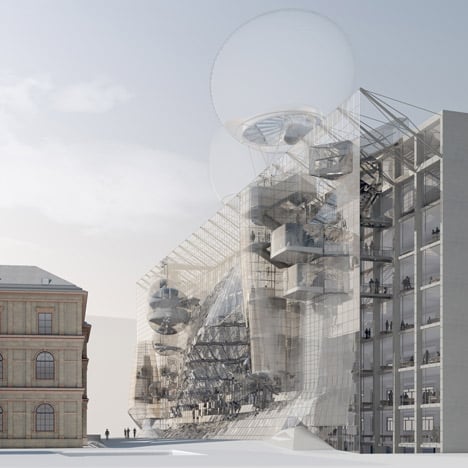
University of Applied Arts Vienna by Wolfgang Tschapeller
Austrian architect Wolfgang Tschapeller has won a competition to overhaul the University of Applied Arts Vienna with proposals that include facade-climbing staircases and giant balloons.
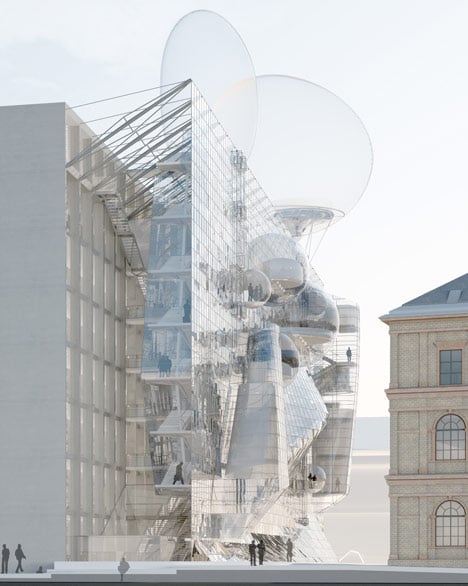
The architect plans to demolish an existing link building, allowing room for all staircases and elevators of the main university block to be relocated onto its exterior beneath an undulating blanket of glass.
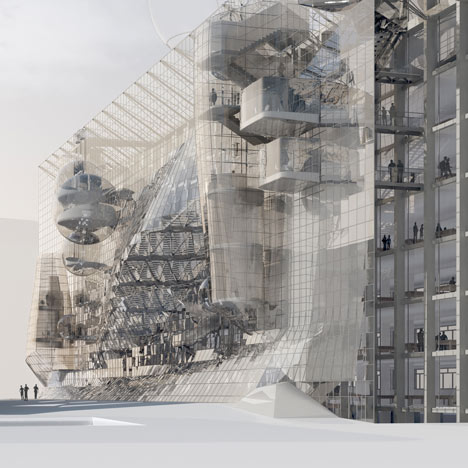
This will create larger floorplates within the building for studios, as well as extended areas for lecture halls, workshops and storage spaces.
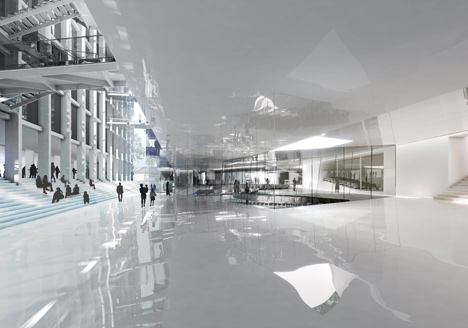
An internal plaza will also be enclosed behind the extruded facade, while gardens will bridge the spaces between this block and its neighbour.
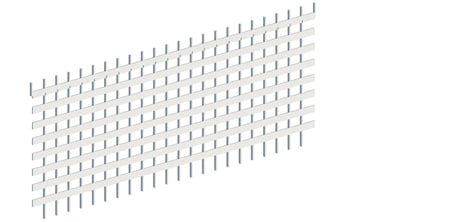
Two large pneumatic balloons are to be positioned on the roof and will be inflated to signify special events or occasions.

This isn't the first unusual building proposal from Wolfgang Tschapeller that we've featured - click here to see plans for a science centre on stilts.
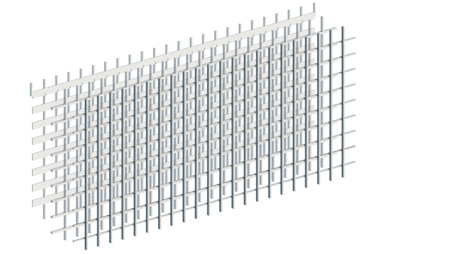
Here's some more explanation from the architect:
6 Points for a NEUE ANGEWANDTE
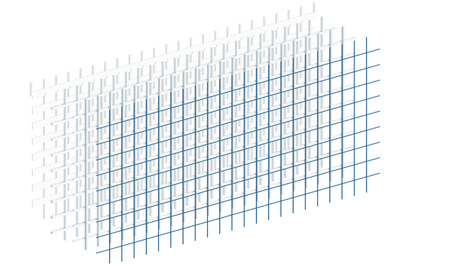
Between 1st and 3rd district in Vienna on the Ringstrasse a few buildings of different authors and times are collected on a block.
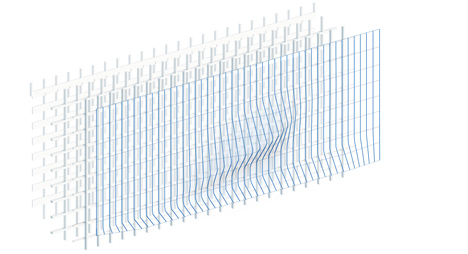
Heinrich von Ferstel, Schwanzer-Wörle and Noever-Müller are the architects of the group of fine buildings.

Some of them serve the purposes of the Museum for Applied Arts and some of them serve the University of Applied Arts.
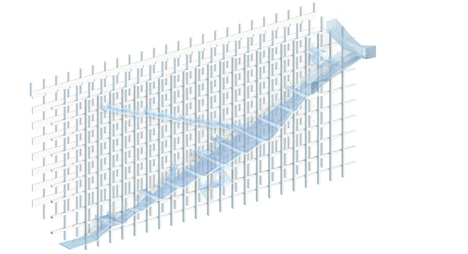
The original urban intent for this group of buildings follows a very fine, subtle and precise idea.
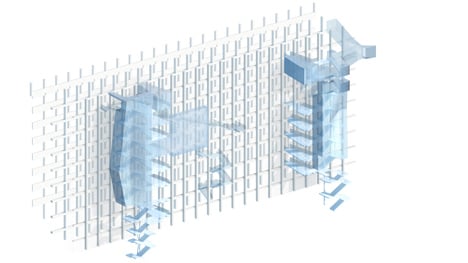
Although being part of a block, or standing on a block, they were always meant to keep their independency and autonomy by simultaneously allowing for a visibility of the space in between them.
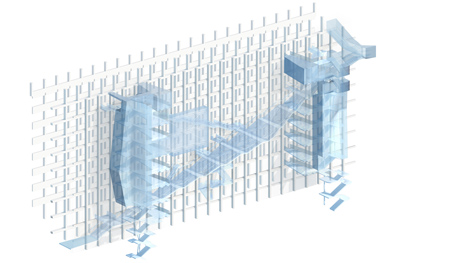
In late 2011 an international 2 stage competition was announced.
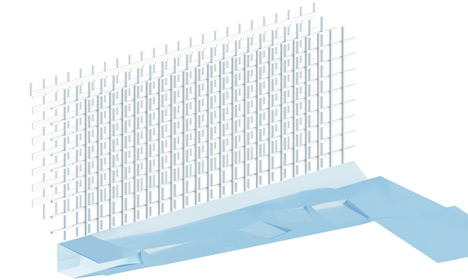
Wolfgang Tschapeller ZT GmbH proposed 6 POINTS FOR A “NEUE ANGEWANDTE”
ERASE ⇒ RESTORE
The LINK BUILDING by Schwanzer/Wörle was an unfortunate move.
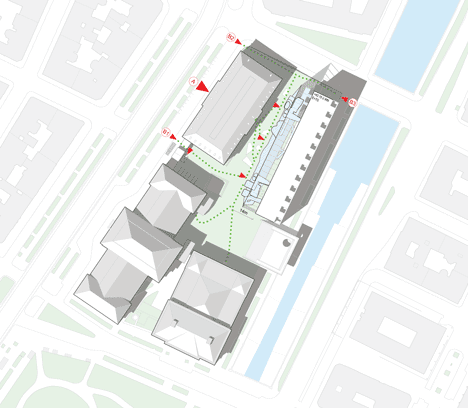
It does not only work strongly against the original urban intent of a loose and open grouping of buildings on a block. It works also against the character of Schwanzer/Wörle´s own design.
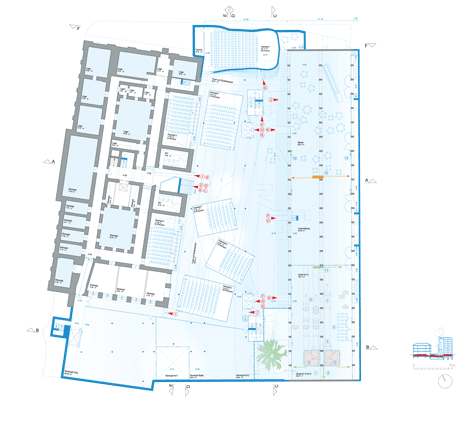
Click above for larger image
Ferstel Bau as well as the Schwanzer/Wörle Bau are in their essence autonomous objects standing in critical and productive distance to each other. Such a reading is re-proposed in our project. Consequently the following steps are proposed: Demolition link building, Reconstruction of those parts of the Ferstel Bau and the Schwanzer-Wörle Bau which were destroyed by the insertion of the LINK BUILDING, Activation of the now very well lit areas of the Schwanzer/Wörle Bau.
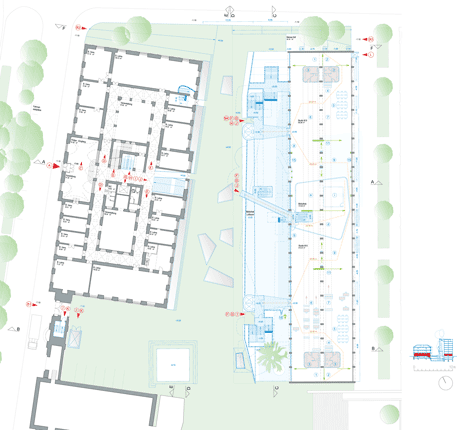
Click above for larger image
DISLOCATE
We are fascinated by seriality of the Schwanzer/Wörle Bau. The building consists in essence of a series of columns and slabs.By taking out stairs and elevator cores and by repositioning them in front of the serial structure of the Schwanzer/Wörle Bau two essential targets are achieved: full flexibility on the entire floor slab, remarkable gain of usable floor area, improvement of circulation (in economic and spatial terms).
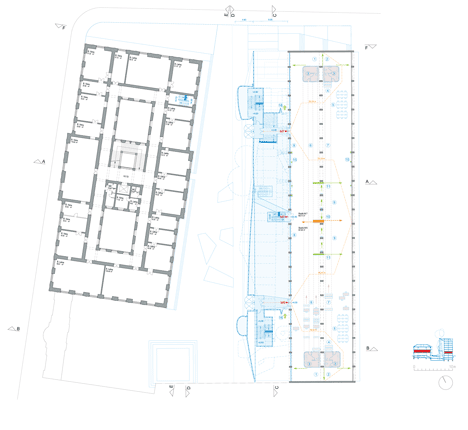
Click above for larger image
PURE STRUCTURE – AN ENTIRELY EMTPY SHELF
The removal of stair and elevator cores displays a pure serial structure. What remains are solely columns and slabs, ready for multiple functional readings. The shelf like structure will house the Studios.
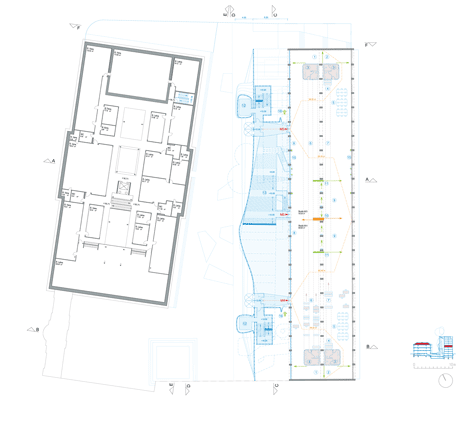
Click above for larger image
COMMON BASE
Ferstel Bau and Schwanzer/Wörle Bau are connected by a common functional base, containing lecture halls, workshops, storage spaces, technical installations as well as supply lines and waste management.

Click above for larger image
CAMPUS - WHERE 17 DIFFERENT STUDIOS MEET
In essence we propose 3 main connecting elements to “make” the new Campus of the Angewandte. The INTERIOR SQUARE connects Ferstel Bau with Schwanzer/Wörle Bau, the GARDEN connects the buildings of the University with those of the Museum, the BROADWAY, a large stair which runs diagonally across the elevation of the Schwanzer/Wörle Bau. The BROADWAY is not only a means of circulation; it is the platform where members and knowledge of the 17 different studios meet. It is the informal marketplace for cross disciplinary projects.
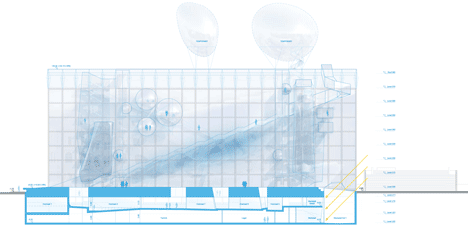
Click above for larger image
TEMPORARY STRUCTURES
On the roof of the University two optional, temporary structures are proposed. Two pneumatic balloons indicate and signal special occasions at the Angewandte to the surrounding City. Raised transparent balloons means a special day, like flags on a building.
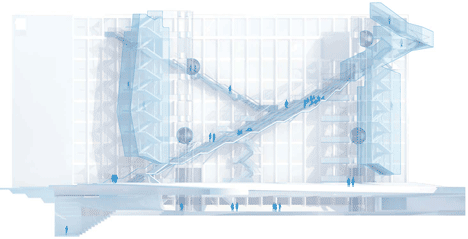
Click above for larger image
Project: University for Applied Arts, Vienna, international Competition, 1st Prize
Author: Wolfgang Tschapeller ZT GmbH
Project team: Jesper Bork, Simon Oberhammer, Mark Balzar, Franz Kropatschek, Gonzalo Vaillo Martinez, Daniel Erl
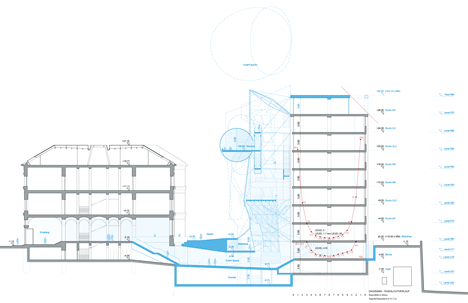
Click above for larger image
Experts: Werkraum Wien, Tragwerk
Planungsgruppe Grünpichler GmbH, TGA
Dr. Jochen Käferhaus, Energie + Klimadesign
Brandrat, Brandschutz
Klaus Pokorny, Lichtplanung
ISOCHROM, Armin Hess, Renderings